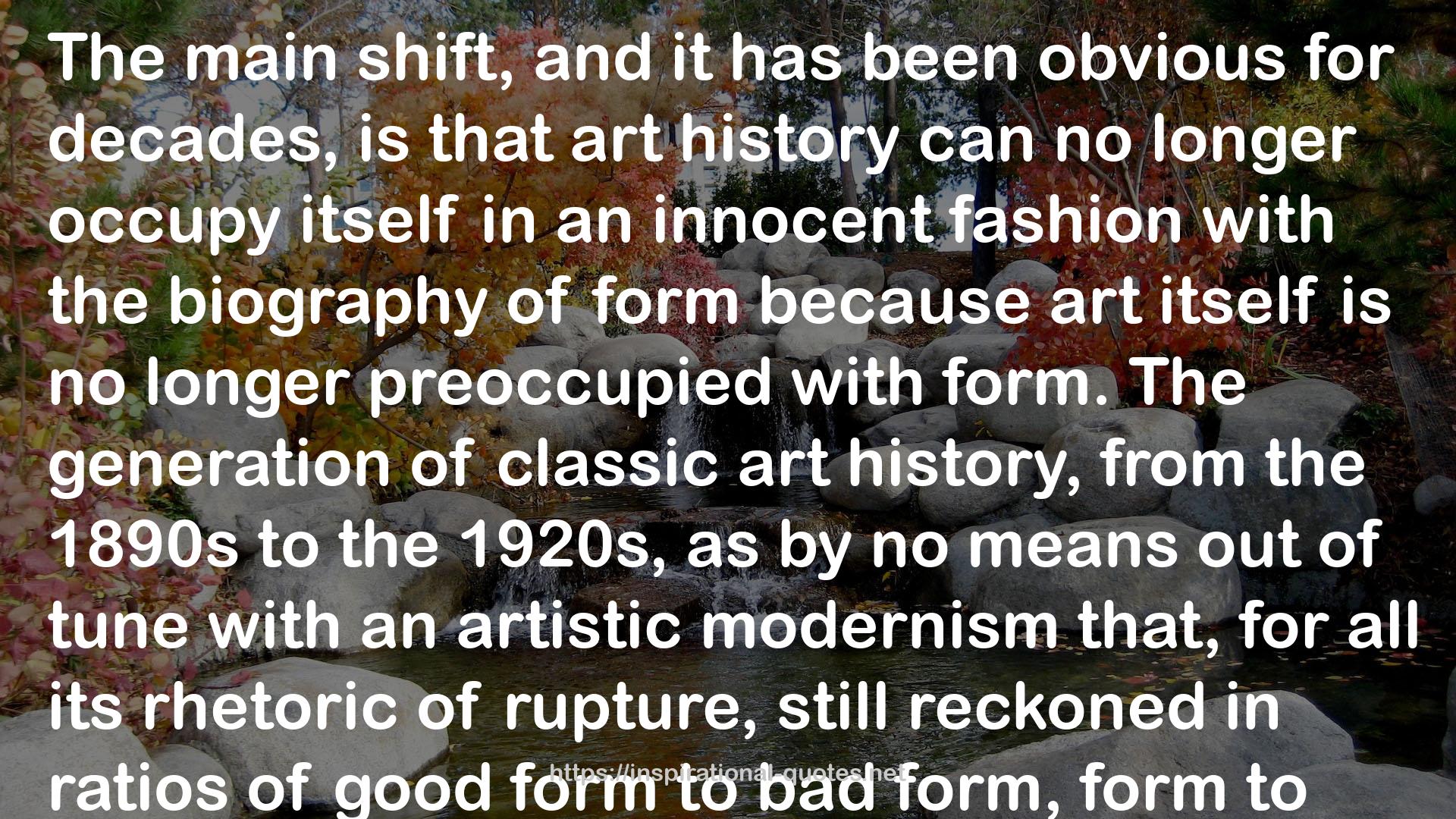" The main shift, and it has been obvious for decades, is that art history can no longer occupy itself in an innocent fashion with the biography of form because art itself is no longer preoccupied with form. The generation of classic art history, from the 1890s to the 1920s, as by no means out of tune with an artistic modernism that, for all its rhetoric of rupture, still reckoned in ratios of good form to bad form, form to non-form, form to content. That early twentieth-century paradigm has long since broken down as art redistributes itself in events, vectors, emotions, ideas, clusters or swarms of artifice. Art today is less about form than about the conditions of possibility of effective speech and action, the tension between enunciation and performance, the virtues of images. Today creativity itself is differently distributed in society: in the mass media and social networks, i amateur or outsider art, in fashion elite and democratic, in the proliferation of recognized but little-esteemed aesthetic categories - 'the zany, the cute, and the interesting,' for example. Even the sophisticated discourses of modernism that have dominated art-history departments over the last three decades - the 'classic art history' of our time - are not keeping pace. They are still organized by master-discipline chains reaching back into the 1960s, chains of psychic involvement that binds generations, despite everything, to the old courses of form. "
― , A History of Art History
